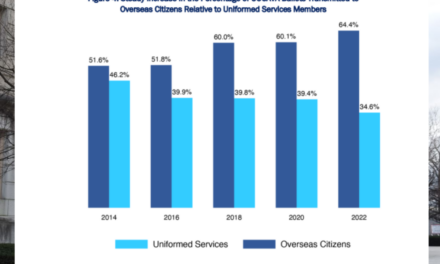We support our Publishers and Content Creators. You can view this story on their website by CLICKING HERE.
Former President Donald Trump’s appearance at a Pennsylvania McDonald’s over the weekend galvanized supporters around his pro-American, proletariat message. It was a huge hit among almost everyone except the liberal media and others who suffer from Trump Derangement Syndrome.
And while his visit to the iconic golden arches and well-documented eating habits seem to directly contradict the goals of the newly affiliated “Make America Healthy Again” movement, there is a pasture in which these two meet — a pasture filled with cows. Cows that produce a forgotten ingredient well primed to make a comeback: beef tallow.
Many health advocates used Trump’s momentary “employment” to push for a return to beef tallow, as opposed to seed oil, in the fryers at McDonald’s. RFK Jr. himself addressed the issue in a post on X. Rather than make unrealistic demands of Americans to ditch junk food altogether, he simply wants people to enjoy their occasional indulgences without fear of being poisoned, saying, “People who enjoy a burger with fries on a night out aren’t to blame, and Americans should have every right to eat out at a restaurant without being unknowingly poisoned by heavily subsidized seed oils. It’s time to Make Frying Oil Tallow Again.”
The idea went viral with many health advocates chiming in about making French fries great again and riffing off the title of Trump’s popular book with “The Art of the French Fry.”
Where’s the Beef?
So what’s the beef with beef tallow?
Simply put, beef tallow is rendered beef fat, although it can also come from deer, lamb, or bison. It is similar to lard, but lard typically is softer, has a milder taste, and is more popular for baking. Tallow is known for its slightly beefier taste and is often used in deep frying and to make soaps and candles. Tallow was frequently used before vegetable oils and cooking fats, such as Crisco, came along. Once these more conveniently packaged, readily available, and cheaper alternatives began appearing in the marketplace, tallow all but disappeared.
Tallow has a high smoke point — around 450 degrees — which explains why up until 1990, McDonald’s primarily used it for deep frying items such as French fries. It also has a long shelf life and is an excellent way to utilize the whole animal — something that decreases waste and honors the life of cattle. This practice was common for farmers just a couple of generations ago.
In addition to cooking, beef tallow can be used as a skincare ingredient as it is highly emollient and high in Vitamin E, which protects cells from free radical damage. It can reduce inflammation and may reduce the risk of infection, as it is anti-microbial. The fat is also rich in vitamins A, D, K, and B1.
Tallow is primarily composed of triglycerides, almost half of which are saturated fats, which is another reason it started vanishing from people’s pantries around the 1950s. Doctors began to warn people of the dangerous effects of high triglycerides, stating that it caused heart attacks.
However, many health experts claim government agencies have been misdirecting blame and that saturated fats are not the problem. Highly processed and packaged food, including products made with seed oils, are bigger contributors to high triglyceride levels, which leads to metabolic dysfunction and a rise in chronic health conditions, including heart disease.
According to the University of Rochester Medical Center, “When you eat extra calories — especially carbohydrates — your liver increases the production of triglycerides.”
Bring Back Real Food
Currently, Micky D’s uses a blend of oils — canola, soybean, and hydrogenated soybean — to turn spuds into the golden, crispy slivers of goodness the fast-food chain is so well known for. Additionally, before going into the deep fryer, the salty sticks get dunked in an “ingredient bath” of dextrose and sodium acid pyrophosphate, which is basically sugar and a leavening agent to prevent the fries from changing into an unappetizing color. They ensure the fries can be transported from the production factory to the frier without turning greenish brown.
While both additives are “generally” considered safe by the FDA, some reports show that in large doses, SAPP can suppress immune function.
Many people long for the days when food was just food and their French fries had three ingredients: potatoes, beef tallow, and salt. The ketchup they dipped those fries in was made from tomatoes, cane sugar, and salt rather than two different types of corn syrup and some mysterious “natural flavoring.”
If a new administration can take small steps toward making our food real again, Trump, and millions of other Americans, will still be able to have their French fries and eat them too.

 Conservative
Conservative  Search
Search Trending
Trending Current News
Current News 





